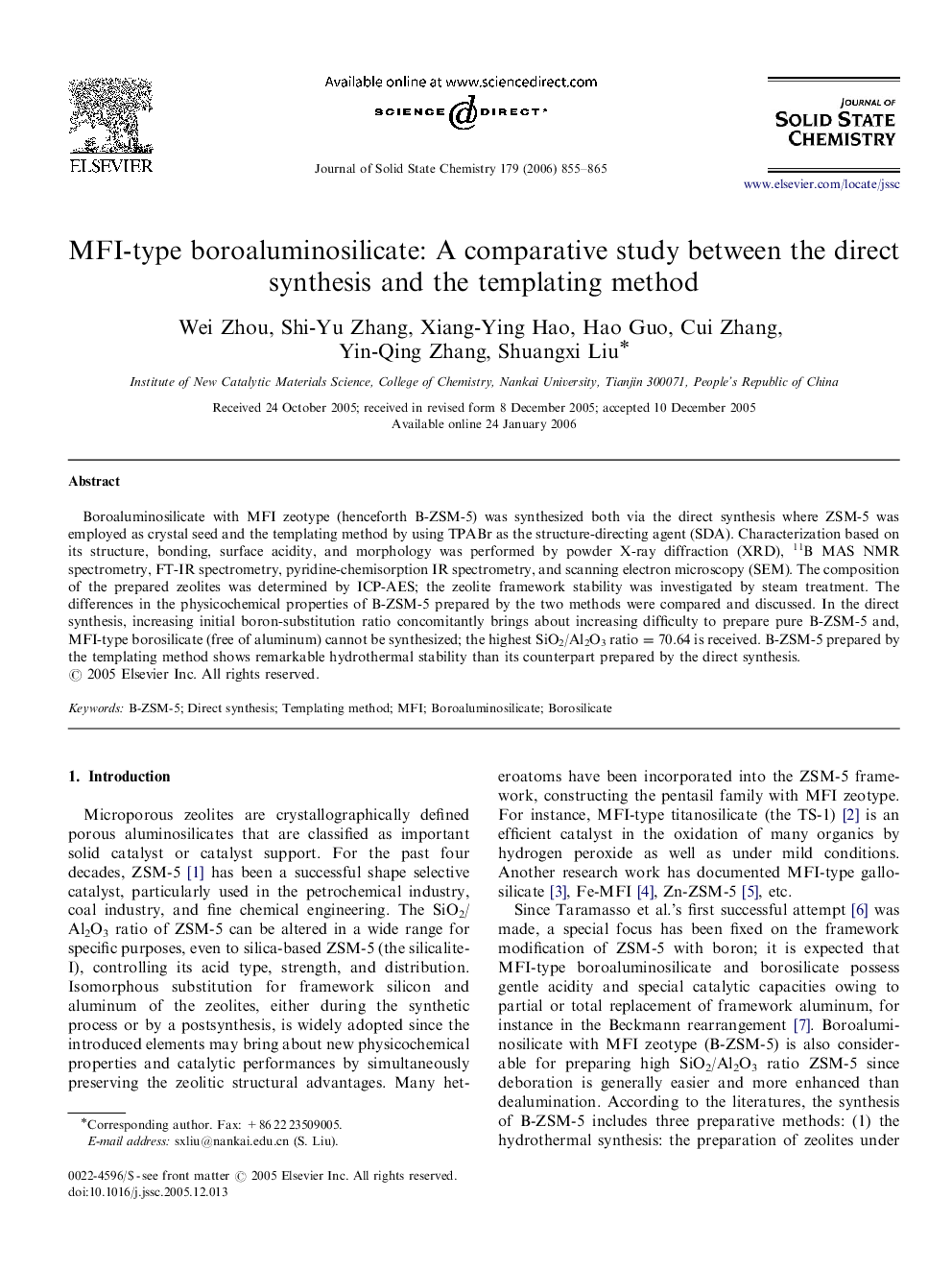| Article ID | Journal | Published Year | Pages | File Type |
|---|---|---|---|---|
| 1331961 | Journal of Solid State Chemistry | 2006 | 11 Pages |
Boroaluminosilicate with MFI zeotype (henceforth B-ZSM-5) was synthesized both via the direct synthesis where ZSM-5 was employed as crystal seed and the templating method by using TPABr as the structure-directing agent (SDA). Characterization based on its structure, bonding, surface acidity, and morphology was performed by powder X-ray diffraction (XRD), 11B MAS NMR spectrometry, FT-IR spectrometry, pyridine-chemisorption IR spectrometry, and scanning electron microscopy (SEM). The composition of the prepared zeolites was determined by ICP-AES; the zeolite framework stability was investigated by steam treatment. The differences in the physicochemical properties of B-ZSM-5 prepared by the two methods were compared and discussed. In the direct synthesis, increasing initial boron-substitution ratio concomitantly brings about increasing difficulty to prepare pure B-ZSM-5 and, MFI-type borosilicate (free of aluminum) cannot be synthesized; the highest SiO2/Al2O3 ratio=70.64 is received. B-ZSM-5 prepared by the templating method shows remarkable hydrothermal stability than its counterpart prepared by the direct synthesis.
Graphical abstractBoron-incorporated ZSM-5 zeolite was synthesized both via the direct synthesis and the templating method. The prepared B-ZSM-5 was characterized based on its structure, bonding, surface acidity, morphology, and chemical composition by a series of instrumental analysis and spectroscopic methods. The framework stability was investigated by the steam treatment. The differences in physicochemical properties of B-ZSM-5 prepared by the two methods were compared and discussed.Figure optionsDownload full-size imageDownload as PowerPoint slide
